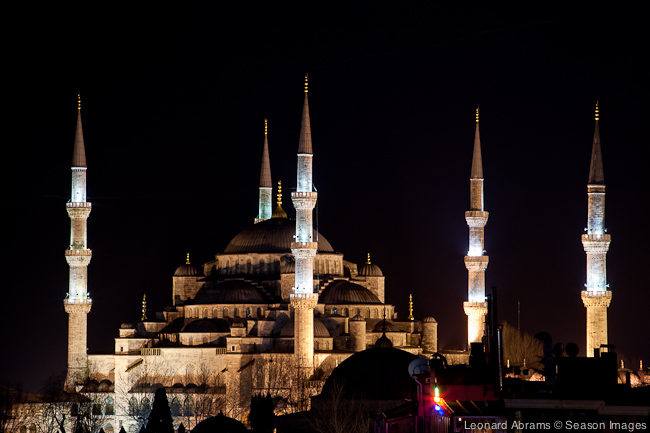A visit to Istanbul
This is the third blog derived from a three-day visit to Istanbul in February 2012. Visiting Istanbul in February or March turned out to be a good idea. Many fewer other tourists and much cooler (almost too cool with a day of snow!).
One of the drawbacks / challenges of photographing the amazing Mosques and Byzantine architecture was that they do not permit the use of tripods – not even monopods. I should have had a beanbag – I did get a fair number of lengthy exposures (8-10 secs) by placing the cameras on the floor, against pillars etc. and using a remote release.

The Süleymaniye Mosque
The Süleymaniye Mosque was built between 1550 and 1558. It has blended Islamic and Byzantine architectural elements. It combines tall, slender minarets with large domed buildings supported by half domes in the style of the Byzantine church Hagia Sophia. The interior of the mosque is almost a square, 59 meters in length and 58 meters in width, forming a single vast space which creates an inspiring place of worship and prayer. The dome is flanked by semi-domes, and to the north and south arches with tympana-filled windows, supported by enormous porphyry monoliths. It was a privilege to be able to visit this amazing place.
